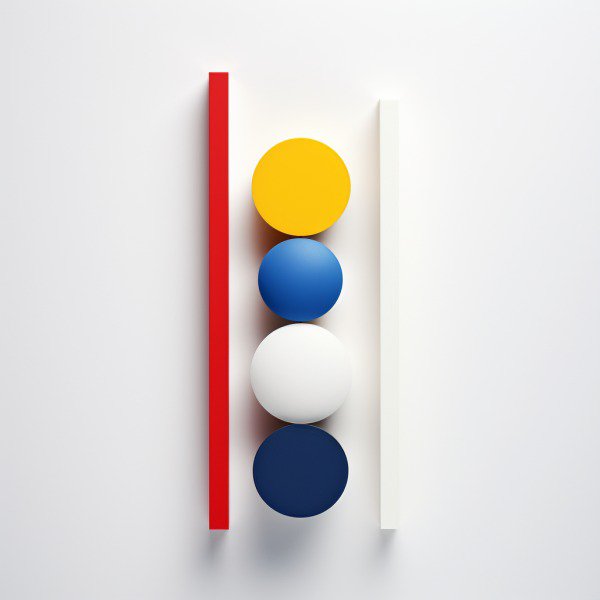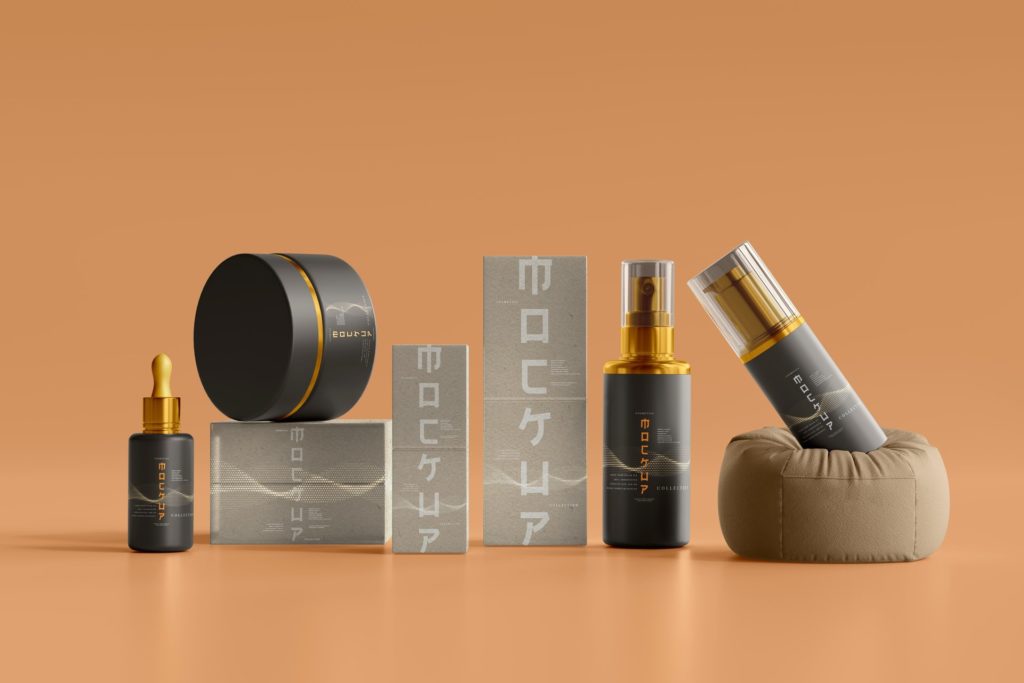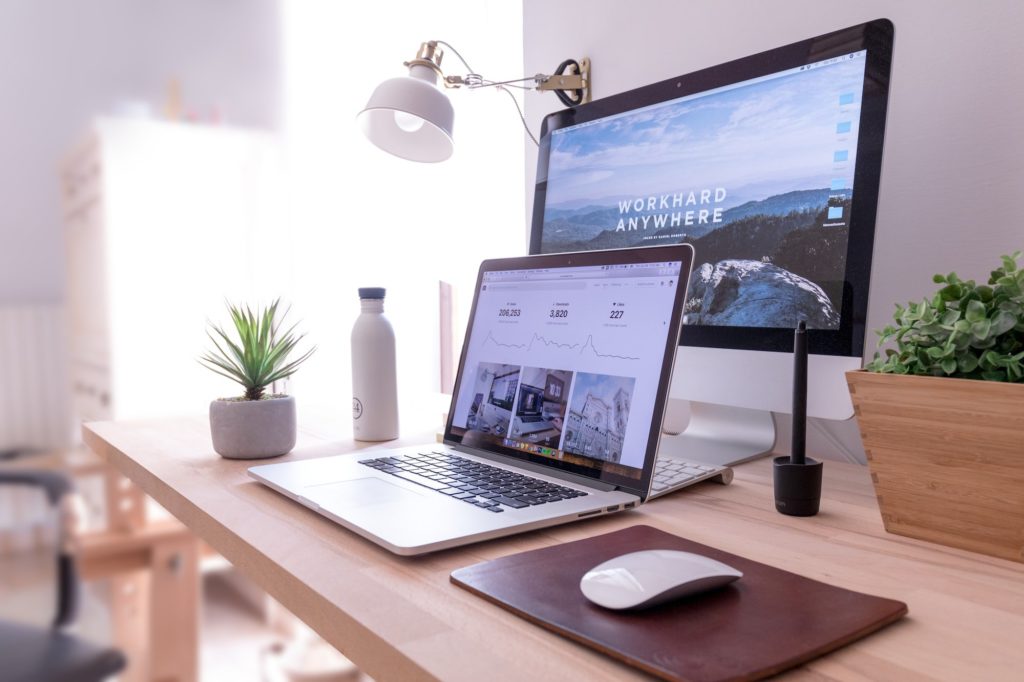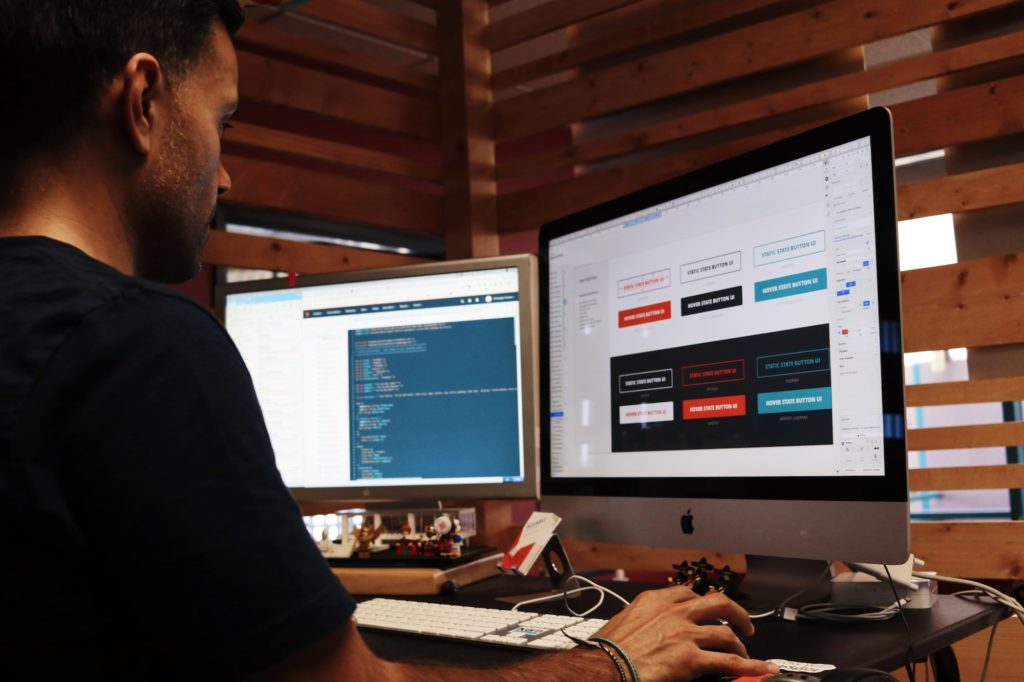Have you ever tried to explain what a sunset looks like to someone who’s never seen one? That’s how it feels when I try to define design. Is it a form of creative expression, an engineering procedure, or something else?
In this broad field, design is both a noun and a verb. It encompasses the act of creating and the outcome itself – from the sleek lines of your smartphone to the layout of your apartment building. When you think of the definitions of design that’s a lot to it.
We’ll dive deep into different definitions of design, its evolution over time, its significance in our daily lives, career paths in design fields…even tackling some common challenges designers face. So whether you’re just starting out or already knee-deep in product designs at work – buckle up!
You might find yourself seeing not just sunsets but everything else through fresh eyes.
Table of Contents:
- Understanding the Basics of Design
- Tracing the Evolution of Design
- The Significance of Good Design
- Common Challenges in Design
- Design in Everyday Life
- Career Paths and Education in Design
- Insights from Industry Experts
- Future Perspectives on Design
- FAQs in Relation to Definitions of Design
- Conclusion
Understanding the Basics of Design
The term dɪˈzaɪn, more commonly known as design, refers to the intricate process of creating a preliminary sketch or plans for something that is about to be executed. It’s not just about drawing pretty pictures; it requires planning and crafting with artistic skill.
Akin to a notebook filled with writing and drawings, design is versatile, encompassing everything from product creation in mechanical engineering, graphics communication, and industrial sectors, to electrical schematics in civil/architectural spaces. As you can see the definitions of design are broad, they cover many different design approaches.

The Role of Design Teams
In the vast world of designing – whether we’re talking apartment buildings or smartphones – collaboration plays an integral part. A group effort allows diverse perspectives on any given project. This collective approach brings together various experts like engineers for product design or mechanics for complex structures. They each bring their unique skills into play which contributes towards comprehensive solutions that take multiple viewpoints into account.
Schools’ Take On Definitions of Design
Design schools around the globe teach different approaches to design. Some might focus more on practical aspects such as mechanical engineering, while others delve into a broad field of subjects including graphics communication and industrial design.
A few even go beyond teaching technical skills by encouraging students to develop their own unique style. The famous quote from William Collins Sons & Co Ltd., “A designer knows he has achieved perfection not when there is nothing left to add, but when there is nothing left to take away” encapsulates this beautifully.
Key Thought:
Design is more than creating attractive visuals; it’s a meticulous process involving planning, artistic skill, and collaboration across sectors like engineering or industrial design. Good designs consider user needs and follow principles of simplicity to avoid costly mistakes. Design schools worldwide teach varied approaches but agree that perfect design means nothing left to remove.
Tracing the Evolution of Design
From primitive cave paintings to the sophisticated designs of today, design has been a part of human culture for millennia. From cave paintings to modern designs, every era brought about innovative techniques, concepts, and movements. Overtime, the definitions of design have evolved.
The Impact of Technology on Design
As societies advanced technologically, so did their approach towards design. The invention of tools like the wheel in prehistoric ages transformed not only transportation but also had profound implications for engineering design. Now, we have engineering design terminology that fit inside out design definitions.
In more recent history, during the Industrial Revolution in the 18th century, advancements in machinery resulted in mechanical engineering becoming an integral aspect of the design process. This paved the way for broader fields such as product design and industrial design.
Today’s digital age brings forth unprecedented opportunities and challenges within all domains, including graphics communication and electrical designs.
Influential designers who shaped modern aesthetics
Jony Ive, renowned designer at Apple Inc., is one example whose work greatly influenced user interface designs worldwide through his work on products like the iPhone (aka smartphone). His philosophy echoed that “Design can also mean intending something for a specific purpose or forming and conceiving an idea.”
Aaron Pressman from Fortune even noted this fact while discussing Jony Ive’s influence when reviewing Apple Watch Series 6 first impressions. He stated that it wasn’t just about creating pretty objects but rather designing with intentionality to improve the overall user experience.
“Ive understood early on how crucial it was to consider not only physicality but interaction when crafting new technologies,” says Pressman.
Charles Eames, another pivotal figure in design history, brought about a paradigm shift in furniture designs with his use of new materials and techniques. His innovative approach is reflected through the iconic Eames Lounge Chair, which even today remains a symbol of modern aesthetics.
A Glance at Modern Design Movements
When it comes to modern movements, we can’t ignore the powerful impact that Bauhaus made. This revolutionary design school reshaped our aesthetic landscape, leaving an indelible mark on architecture and art alike.
Key Thought:
Ray, a design legend from the mid-century modern period, taught us that good design should marry function and aesthetics. As we continue to advance technologically, our designs will keep evolving too. So whether you’re an aspiring designer or just appreciate great design – remember it’s not only about creating something visually pleasing but also ensuring it serves its purpose effectively.
The Significance of Great Design
Great design is more than just aesthetics. Achieving equilibrium between form and utility, while boosting the user experience and promoting business victory, is what great design is all about.
Case Studies of Successful Designs
In the world of tech, we can see the impact great design has on business success. Jony Ive, Apple’s legendary designer, held the belief that design encompasses more than just aesthetics; it also reflects how something works. Design is how it works.” This philosophy guided his designs from the iMac to iPhone.
Jobs’ famous words, “Design is not just about appearance and feel, but also how it works,” encapsulate the importance of both aesthetics and functionality in design. Design is how it works.” He wasn’t talking about mere appearance; he was emphasizing functionality alongside aesthetics – both crucial components in definitions of design.
This principle played out beautifully when you consider the popularity surge iPhones experienced upon their introduction. They weren’t simply functional – they were beautiful too. These devices exemplify value through great design by combining usability with an attractive interface.
A similar case can be made for industrial products where functionality meets aesthetics for enhanced user experience such as Dyson’s vacuum cleaners or Tesla cars which marry innovation with elegance.
The Impact on User Experience
User experience (UX) heavily relies on good design principles to make sure people find your product enjoyable and easy to use.
Let me tell you something interesting- according to Adobe, 38% of people will stop engaging with a website if its layout or content isn’t visually appealing.
- If users have trouble navigating your site due to poor layout choices, they’ll quickly become frustrated & leave – never a desirable outcome.
- An intuitive menu structure and easy-to-find information can significantly enhance user experience.
- Attractive visuals, intuitive navigation, and accessible content make a site or app more enjoyable to use. And the happier your users are with their experience, the more likely they’ll be to stick around.
The Business Side of Great Design
A well-designed product isn’t just easier for people to use—it also impacts business success.
Key Thought:
Great design isn’t just about looks; it’s a harmony of form, function, and user experience that drives business success. Whether we’re talking tech like Apple or industrial products like Dyson, the best designs blend usability with visual appeal. Remember this: Good design can make your users happy and keep them engaged while boosting your bottom line.
Common Challenges in Design
The world of design, from product design to the broad field of engineering, presents its own unique set of challenges. Balancing creativity with practicality is often easier said than done. Here we explore some common pitfalls designers encounter and offer strategies for navigating these hurdles.

Addressing Sustainability in Designs
In today’s environment-conscious era, sustainability plays a crucial role in designs across various domains. But weaving eco-friendly practices into the fabric of our creations can be challenging.
To start off, let’s consider materials used for an apartment building or smartphone production. Often times they’re sourced without regard to their environmental impact – leading not only to cost overruns but also ethical considerations that could taint a company’s reputation.
Aiming for green solutions requires us to rethink traditional methods and materials completely – a tough task when under budgetary constraints or tight deadlines. The European Union’s ambitious Green Deal initiative, which seeks new ways to merge aesthetic appeal with ecological responsibility demonstrates this commitment on an international scale.
Balancing Creativity With Practicality
The realm where art meets function is indeed tricky terrain. Creating a great design means making something both aesthetically pleasing and functional – whether it’s graphics communication work or mechanical engineering endeavors.
For instance, Steve Jobs once described design as “not just what it looks like and feels like…Design is how it works.” This mantra embodies the ethos at Apple where aesthetics are balanced carefully against user interface ease-of-use aspects.
However striking this balance can lead designers down rabbit holes chasing perfect form while losing sight of functionality; a design flaw that can prove costly in the long run.
Managing Design Complexity
As we push boundaries of what’s possible, designs inevitably become more complex. Whether it’s an intricate rangefinder camera or designing for virtual and augmented reality applications, complexity introduces new layers of difficulty.
It seems like there’s some missing information here. I’m going to need a bit more context or details in order to give you the best possible output. Can we try again?
Key Thought:
Navigating the design world presents unique challenges, like balancing creativity with practicality and managing complex designs. Moreover, integrating sustainability into our creations is tough but essential in today’s eco-conscious era. To overcome these hurdles, we need to rethink traditional methods and strike a balance between aesthetic appeal and functionality.
Design in Everyday Life
Look around you. Design is everywhere—from the smartphone that fits perfectly into your hand, to the ergonomic chair supporting your back as you work, right down to the layout of this webpage. Each aspect meticulously planned and executed with purpose. When thinking of the definitions of design, many of us first think of products we use daily.
The Magic of Product Design
Product design makes everyday items more than just functional objects—they become experiences. Steve Jobs was a proponent of designing Apple products to be user-friendly and visually appealing.
A definition of design, particularly in relation to products, is creating something both aesthetically pleasing and easy-to-use. When done well, good designs fade into the background because they fit so seamlessly into our lives—like a great smartphone or intuitive user interface.
Influence on Architecture: The Building Blocks of Life
Moving from handheld gadgets onto grander scales—we live within architectural marvels daily without realizing it. From an apartment building that optimizes space for hundreds while ensuring privacy, to a city park designed for relaxation amidst urban hustle—the genius lies in how effortlessly these structures blend functionality with aesthetics.
The balance between practicality and visual appeal defines successful architecture—a feat not easily achieved but appreciated by all who experience it firsthand.
Tech & Design: A Symbiotic Relationship
In today’s digital age, technology has broadened our understanding of what constitutes ‘design’. Consider website layouts—an amalgamation of graphics communication coupled with mechanical engineering behind servers keeping sites up-and-running smoothly—that reflect intelligent use of tech-enhanced creativity resulting in engaging online spaces we frequently visit.
Type Example Design Influence Product Design iPhone by Apple User-friendly interface and sleek aesthetics redefine mobile experience.
Architecture Explore the Guggenheim.
Key Thought:
Design, be it in everyday products or architecture, aims to blend functionality with aesthetics. The magic of design transforms ordinary objects into experiences that seamlessly fit into our lives. In the digital age, technology further enhances creativity in design—making engaging online spaces a reality.
Career Paths and Education in Design
The field of design offers an array of rewarding career paths. The right educational background can give you the skills needed for a successful design career, from understanding the definition of design to applying principles learned at top-notch design schools and programs.
Importance of Portfolio and Internships
To land your dream job in this broad field, creating a portfolio that showcases your work is crucial. A well-curated portfolio speaks volumes about your abilities.
In addition to a strong portfolio, internships provide valuable real-world experience. They allow you to apply classroom knowledge into practice while also building professional relationships.
Diverse Career Options In Design
Design is not confined within one sector but spreads across multiple industries – from product designs like smart phones or apartment buildings to engineering processes such as electrical or mechanical designs.
- A career in industrial design could have you designing anything from furniture pieces reflecting modern design movements to ergonomic smartphone models with great user interfaces.
- Mechanical engineers often work on projects involving precision mechanics such as rangefinder designs or complex engineering domains like stealth jet development.
- If graphics communication piques your interest, careers range from book report posters layout for school kids all the way up to creating comprehensive visuals for industry experts’ presentations.
Your chosen path will largely depend on where your interests lie – whether it’s designing stunning set pieces inspired by William Collins Sons & Co Ltd.’s publications for theatre productions or developing green solutions echoing Europe’s ‘new Bauhaus’ initiative. [source]
Continuing Education in Design
In the ever-evolving field of design, continuing education is essential. Learning doesn’t stop after graduation; staying updated with emerging trends and technologies can give you an edge over others.
are always one step away from mastering something new. Diving into courses and workshops can really ramp up your skills or even let you discover ones you didn’t know existed.
Key Thought:
Thriving in design careers demands a solid educational foundation, coupled with real-world experience from internships. A well-curated portfolio is key to showcasing your abilities and versatility across industries – be it product designs or graphic communications. Keeping up-to-date through continuing education will keep you ahead of the curve in this ever-evolving field.
Insights from Industry Experts
The field of design is ever-changing, and the definitions of design are expanding – with numerous views and ideologies driving its progression. Insights from industry experts offer valuable nuggets that can influence the trajectory of your own design journey.

Perspectives on Design Trends
Trends act like wind beneath designers’ wings; staying abreast helps soar higher. For instance, modern design philosophy emphasizes simplicity and functionality—characteristics popularized by Jobs’ minimalist approach at Apple Inc.
The application goes beyond just electronics; think apartment buildings designed with energy efficiency or marble patterned products signifying opulence yet maintaining usability. These examples signify how great designs incorporate contemporary trends while ensuring utility—a balancing act indeed.
Gleaning Wisdom From Pioneers
Depending on the field, definitions of design change.
- Jony Ive’s remarkable industrial designs for Apple gadgets are a testament to his unique perspective that function should dictate form.
- The iconic chair by Charles Eames showcases how a blend of creativity and industrial design can result in a timeless work of art.
- Pratt & Whitney’s F135 engine, despite initial cost overruns, demonstrated the power of iterative design processes.
The lessons from these leaders reiterate that designs need to serve their purpose efficiently while leaving an aesthetic impact.
Key Thought:
Delving into design, industry insights offer invaluable guidance for your journey. Networking events foster an exchange of ideas and trends that shape modern design philosophy—emphasizing simplicity, functionality, and real-world usability. Drawing inspiration from pioneers like Jony Ive or Charles Eames shows us the beauty in blending creativity with function—a key to timeless designs.
Future Perspectives on Design
The landscape of design is evolving rapidly. As technology progresses, design paradigms are being revolutionized by the advent of virtual and augmented reality.
Designing for Virtual and Augmented Reality
Imagine being able to interact with your designs in a 3D space before they even exist physically. That’s what designing for virtual and augmented reality offers. The immersion into these digital worlds provides designers an unparalleled opportunity to experiment and innovate.
This shift has a profound impact on how we perceive user interface (UI) designs too. With AR or VR glasses, users don’t just see flat interfaces; they engage with spatial ones that surround them from all angles. This calls for more intuitive interaction designs where aesthetics meet functionality in three dimensions.
Rangefinder design comes into play here when determining distances within this simulated environment – enabling accurate representation of real-world scale within the immersive experience.
Sustainable Design Practices for the Future
We can no longer afford to ignore sustainability in our approach towards design – be it product, industrial or architectural sectors. A commitment towards sustainable practices not only makes business sense but also helps create positive societal impact — truly great designs need to take both aspects into account.
A good example lies in architecture: consider an apartment building designed using energy-efficient materials leading to significant cost savings over time while reducing its environmental footprint – that’s green deal at work.
Incorporating Sustainability through Material Choices:
- Eco-friendly concrete solutions could replace traditional materials, reducing carbon emissions.
- Using recyclable metals and plastics in product designs can significantly reduce waste generation.
- Incorporating marble pattern design elements can create aesthetically pleasing yet sustainable interiors.
Impact of Emerging Technologies on Design
Consider smartphones, for instance. They’re a clear example of how technology evolution shapes the future outlook of design.
Key Thought:
even our cities. This fusion not only lets us create in a more responsible way, but also pushes the boundaries of what’s possible in design. It invites us to rethink how we use resources and encourages innovation that can lead to significant change for the betterment of our world.
FAQs in Relation to Definitions of Design
What are the best definitions of design?
When looking at Definitions of Design – there is no best definition. Since design encapsulates many design methods – we can’t box in the experience.
What are the different definitions of design?
Different perspectives on design range from creating aesthetic visuals, engineering solutions, to strategic plans for businesses.
What is the simple definition of design?
In simplest terms, designing means making plans or sketches for something before it’s made.
What is the famous definition of design?
Jobs once famously said, “Design isn’t just what it looks like. Design is how it works.” This statement highlights the importance of functionality in design, not just aesthetics.
Conclusion
Design is not just about looks; it’s the blueprint of our reality, from the gizmos we love to colossal skyscrapers. It’s the blueprint of our world, from your favorite gadget to towering skyscrapers.
We’ve journeyed through the vast field of design – understanding its basics, tracing its evolution, and realizing the significance of great design in everyday life. From this exploration into definitions of design we now understand how it impacts us daily and drives innovation across industries.
Remember that every challenge presents an opportunity for creative solutions – whether it’s a flawed rangefinder or cost overruns on a construction project. Learning from industry experts can offer invaluable insights into trends and philosophies shaping modern designs.
Armed with this knowledge, you’re better equipped to navigate career paths in this broad field or simply appreciate design in new ways around you!




